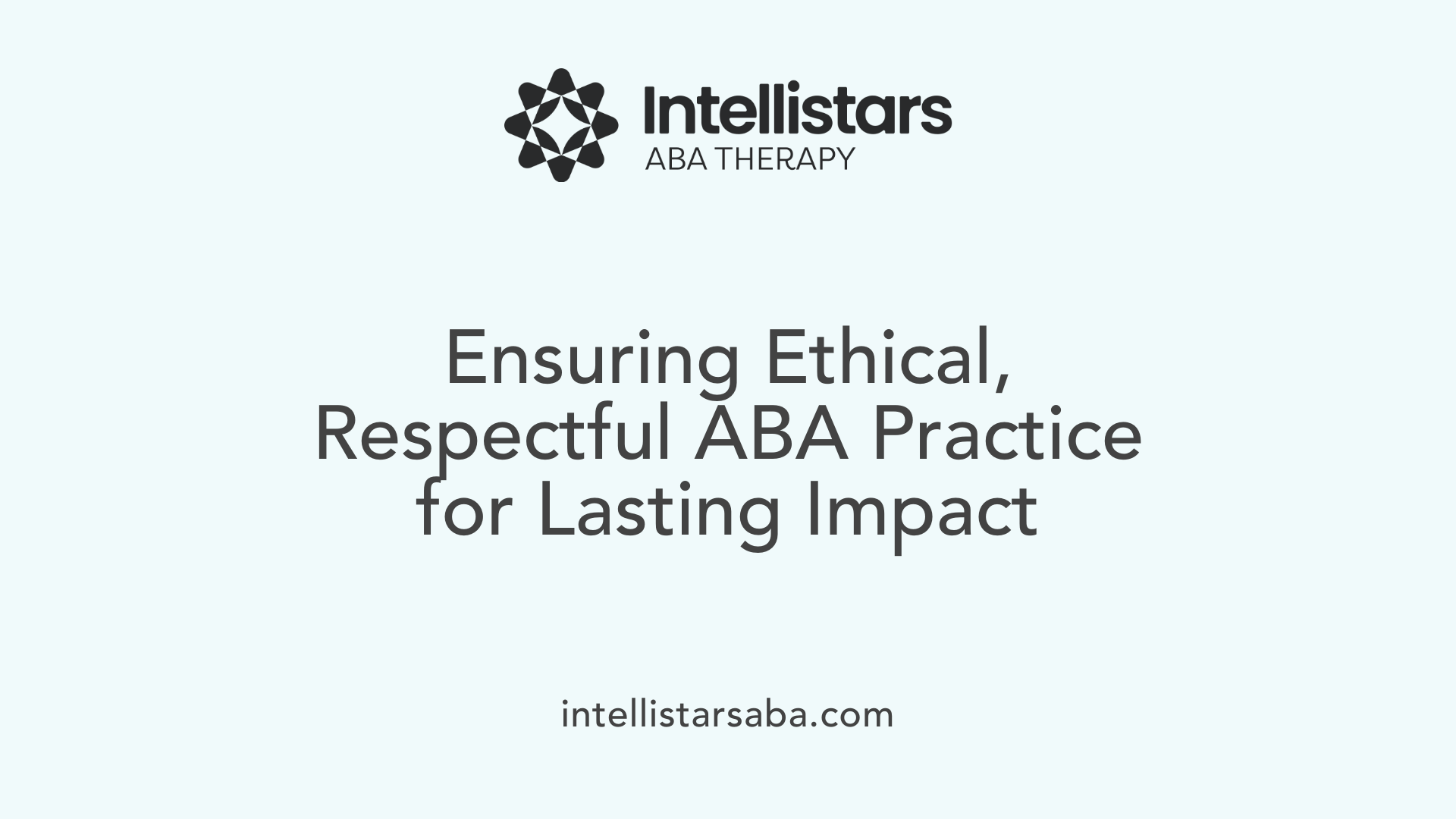Understanding ABA Therapy and Its Impact on Autism
Applied Behavior Analysis (ABA) therapy stands as a scientifically validated approach to fostering essential skills in individuals with autism spectrum disorder (ASD). By using evidence-based behavioral principles, ABA not only addresses challenging behaviors but also enhances communication, social skills, and daily living abilities. This article explores how ABA therapy specifically targets improvements in listening and compliance, crucial areas that support learning and independence in children with autism.
The Foundation of ABA Therapy: Principles and Practices

What is Applied Behavior Analysis (ABA) therapy and how does it help individuals with autism?
Applied Behavior Analysis (ABA) therapy is a scientifically grounded treatment that applies the principles of learning and behavior to support individuals with autism spectrum disorder (ASD). The goal of ABA is to understand how behaviors work, what environmental factors influence them, and how learning happens, enabling tailored approaches that increase beneficial behaviors while decreasing harmful or interfering ones.
Key principles: positive reinforcement, ABC model
Central to ABA is the use of positive reinforcement, a method encouraging the repetition of desired behaviors by rewarding them. Another fundamental tool is the ABC model, which breaks down behavior into Antecedent (what precedes the behavior), Behavior itself, and Consequence (what follows). This framework aids therapists in analyzing and modifying behaviors by identifying what triggers them and the outcomes that either maintain or discourage them.
Structured and naturalistic techniques used in ABA
ABA employs a variety of techniques to teach new skills and modify behavior. Structured approaches like Discrete Trial Training (DTT) involve breaking down complex tasks into small, manageable steps, providing clear instructions, and reinforcing correct responses. Naturalistic strategies, such as Pivotal Response Treatment (PRT), focus on motivation and engagement in more natural environments like play or daily routines. Techniques like Functional Communication Training (FCT) help children replace challenging behaviors with effective communication methods, improving their ability to express needs and reduce frustration.
Role of individualized assessments in ABA design
Each ABA program begins with a thorough assessment considering the individual's unique skills, needs, interests, and family context. Qualified Board Certified Behavior Analysts (BCBAs) design customized treatment plans, setting measurable goals and continuously monitoring progress. This individualization ensures that therapy is meaningful and effective, adapting over time based on data and changing needs.
Together, these components form the foundation of ABA therapy, creating a systematic, evidence-based approach that promotes learning, independence, and enhanced quality of life for individuals with autism.
Who Delivers ABA Therapy and How Programs Are Tailored
Qualified providers and their roles
ABA therapy is provided by a team of trained professionals with distinct roles. Board-certified behavior analysts (BCBAs) design and oversee individualized therapy programs. Registered behavior technicians (RBTs) and licensed therapists implement these plans directly with clients. These providers bring specialized expertise to assess behavior, apply evidence-based techniques, and track progress effectively.
Collaborative teams including family involvement
Family members and caregivers are vital collaborators in ABA therapy. They often receive training to support skill generalization and reinforce strategies in everyday settings. This partnership ensures consistency and helps tailor interventions to the client's home environment and family dynamics.
The process of individualized treatment planning based on assessments
Creating an effective ABA program begins with a thorough assessment of the individual's skills, needs, interests, and family situation. Based on this information, BCBAs develop goals and choose appropriate intervention techniques like positive reinforcement or functional communication training. Regular monitoring and data collection enable ongoing adjustments to the program.
Settings where ABA therapy is delivered
ABA services are flexible and can be delivered in a variety of environments. Common settings include the home, school, therapy centers, or community locations. This flexibility helps meet the client’s unique needs and encourages skill application across different contexts.
Strategies to Enhance Listening and Compliance Using ABA

Understanding non-compliance and its causes
Non-compliance in children with autism often manifests as either passive (ignoring instructions) or active behaviors like whining, crying, or aggression. It is rarely a simple refusal; more commonly, non-compliance arises from factors such as lack of understanding, unclear instructions, low motivation, fatigue, or emotional distress. Recognizing these causes is critical for tailoring effective interventions.
Techniques to improve compliance with simple clear instructions
One effective strategy is to give instructions that are simple and clear to minimize confusion. Clear guidance helps children understand what is expected, reducing frustration and resistance. ABA therapists emphasize breaking down tasks into manageable steps and ensuring that verbal or visual instructions are age-appropriate and straightforward.
Avoiding instruction repetition to maintain seriousness
Repeating instructions can inadvertently reinforce non-compliance by allowing children to delay action. Instead, ABA therapy recommends delivering instructions once with clarity and consistency, reinforcing the importance of the directive while avoiding cues that non-compliance is tolerated.
Providing specific feedback for unfulfilled instructions
When instructions are not followed, providing concrete, specific feedback helps the child recognize exactly what behavior needs correction. For example, saying, "You didn’t take the toy," clearly identifies the issue without ambiguity. This approach promotes understanding and reduces confusion, paving the way for improved following of instructions.
Use and fading of positive reinforcement
Positive reinforcement, such as verbal praise like "Good listening!" or access to preferred items, encourages the repetition of compliant behaviors. Reinforcement motivates children, helping them form new habits and skills. Over time, ABA practitioners gradually fade these reinforcers to encourage intrinsic motivation and independence, ensuring that compliance becomes a natural behavior rather than one dependent on rewards.
ABA therapy’s foundational principles of clear instruction, specific feedback, and strategic reinforcement work together to enhance listening and compliance skills in children with autism. These strategies contribute not only to more effective therapy sessions but also to improved social interactions and developmental outcomes.
Effectiveness of ABA Therapy in Developing Compliance Skills

Evidence supporting ABA's impact on communication and compliance
ABA therapy is extensively supported by scientific research as an effective treatment for individuals with autism spectrum disorder (ASD). It systematically enhances socially relevant behaviors such as communication and compliance through techniques like positive reinforcement and structured teaching methods. Studies show that ABA interventions improve children's ability to follow instructions and engage in meaningful social interactions by breaking down skills into manageable steps and reinforcing progress.
Benefits of early and intensive intervention
Beginning ABA therapy early in childhood, often before the age of six, and providing intensive ongoing support greatly improves outcomes. Early intervention helps children acquire essential communication and compliance skills more rapidly, enabling them to better express needs, reduce frustration, and participate in learning environments. Intensive ABA programs tailored to individual needs promote rapid gains in language, attention, and social skills, which are critical for developmental progress.
Long-term gains in social, cognitive, and adaptive functioning
Children receiving consistent, high-quality ABA therapy show lasting improvements in multiple areas, including social communication, cognitive abilities, emotional regulation, and daily living skills. Such gains contribute to increased independence and academic readiness. Longitudinal research supports that sustained ABA treatment enhances overall functioning and helps children transition more smoothly into school and community settings.
Role of family involvement and consistency
Family engagement and consistency in implementing ABA strategies significantly boost therapy effectiveness. Collaborative, personalized programs that consider family dynamics and provide training for caregivers ensure that learned skills generalize to everyday settings. Consistency in therapy delivery across therapists, settings, and home environments strengthens compliance, facilitates accurate progress tracking, and supports lasting behavior change.
| Aspect | Description | Impact on Compliance Development |
|---|---|---|
| Scientific Evidence | Numerous peer-reviewed studies endorse ABA's effectiveness | Builds confidence in ABA as a reliable intervention |
| Early, Intensive Intervention | Programs initiated early with high intensity | Accelerates skill acquisition and reduces problematic behaviors |
| Long-Term Functional Gains | Improvements in communication, cognition, social skills | Enhances independent functioning and adaptability |
| Family and Caregiver Involvement | Active participation and training of family members | Ensures skill generalization and maintenance |
Developing and Implementing Effective ABA Plans for Compliance

What is the typical process for developing and implementing an ABA therapy plan?
The process of developing and implementing an ABA therapy plan begins with a comprehensive assessment. A Board-Certified Behavior Analyst (BCBA) typically conducts this, using tools such as the Assessment of Basic Language and Learning Skills (ABLLS-R), the Verbal Behavior Milestones Assessment and Placement Program (VBMAPP), and detailed parent interviews and child observations. This assessment identifies a child's current skills and problem behaviors.
An important component is the Functional Behavior Assessment (FBA), which analyzes antecedents, behaviors, and consequences to pinpoint the reasons behind challenging behaviors. The FBA guides the development of targeted interventions.
Creating individualized, data-driven treatment plans
Based on the assessment, the BCBA designs a treatment plan tailored to the child's unique needs, skills, interests, and family situation. This plan defines clear, measurable goals focused on increasing socially significant behaviors such as communication, compliance, and social skills, while decreasing interfering behaviors.
Key elements include:
- Detailed behavior definitions
- Strategies to modify antecedents and consequences
- Replacement behaviors teaching
- Reinforcement schedules using positive reinforcement
- Procedures for data collection and progress monitoring
Teaching with simplified instructions and positive reinforcement
ABA therapy emphasizes clear, simple instructions to reduce confusion and encourage compliance. Repeating instructions is avoided to prevent reinforcing non-compliance, while giving specific feedback clarifies expectations (e.g., "You didn’t take the toy").
Positive reinforcement, such as praise or preferred items, motivates children to follow directions. Therapists gradually fade these reinforcers to promote independent compliance.
Monitoring progress and adapting interventions
Continuous data collection tracks the child’s responses and progress. This allows the BCBA to make informed decisions about adjusting interventions promptly for better effectiveness.
Monitoring also involves evaluating generalization of skills across different settings and maintaining behaviors long-term.
Collaboration among professionals and families
Effective ABA plans depend on collaborative teamwork involving BCBAs, therapists, registered behavior technicians, family members, and when applicable, speech-language pathologists and other specialists. This collaborative approach ensures consistent implementation and supports the child’s development in all environments.
Overall, the individualized, systematic approach of ABA therapy—grounded in assessment, clear instruction, positive reinforcement, ongoing data analysis, and collaborative care—supports children with autism in improving compliance and essential life skills.
Addressing Criticisms and Ensuring Ethical ABA Practices

Are there any criticisms or limitations associated with ABA therapy?
Applied Behavior Analysis (ABA) therapy, while evidence-based and widely used, faces several criticisms. A primary concern is that ABA can overly emphasize compliance and conformity, sometimes at the expense of a child's autonomy and individuality. This focus may pressure children to mask their natural behaviors, which can lead to emotional distress and feelings of losing their authentic selves.
Critics have pointed out that traditional ABA methods might be overly repetitive or demanding, and when punishment procedures are applied without caution, they risk causing harm. There is also worry that ABA programs might neglect crucial aspects such as a child's sensory sensitivities, emotional well-being, and unique strengths by concentrating too much on changing behaviors.
Importance of person-centered, trauma-informed approaches
In response to these concerns, modern ABA practices emphasize using person-centered and trauma-informed approaches. These aim to respect each child's individuality, focusing on their interests and emotional health while supporting meaningful skill development.
Ethical standards have evolved to prioritize respectful interventions that promote autonomy and avoid causing distress. Current ABA professionals strive to tailor interventions collaboratively with families, ensuring that therapy supports the child’s well-being rather than just behavior modification.
Modern ethical standards and respectful interventions
Ethical ABA involves:
- Creating individualized plans that respect personal values and needs
- Avoiding coercive or punitive techniques
- Supporting self-awareness and independence
- Encouraging positive behaviors through reinforcement rather than punishment
- Maintaining ongoing dialogue with families to adapt treatment appropriately
This careful balance helps ABA maintain its effectiveness while honoring the rights and dignity of individuals it serves.
Maximizing ABA Therapy Benefits for Listening and Compliance
Applied Behavior Analysis therapy offers a structured, evidence-based approach to improving listening and compliance skills in children with autism. Through individualized planning, skilled professional input, and the use of positive reinforcement and clear communication techniques, ABA helps reduce non-compliance and enhances essential life skills. Awareness of ethical concerns and adaptation of trauma-informed strategies ensures that therapy respects each child's individuality. With early intervention and consistent application, ABA therapy can foster greater independence, social engagement, and quality of life for individuals with autism, making it a cornerstone of supportive behavioral treatment.
References
- Applied Behavior Analysis (ABA)
- Behavior Management & Compliance: How do I get my child ...
- Does ABA Therapy Work? Progress Parents Can Expect
- ABA Therapy Techniques for Children with Autism
- ABA Therapy Enhance Communication Skills in Children
- Addressing Non-Compliance in ABA Therapy - Blog
- Applied Behavior Analysis (ABA)
- What Is Applied Behavior Analysis - Exploring ABA ...
- ABA Therapy Examples, Definition & Techniques
- The Controversy Around ABA






